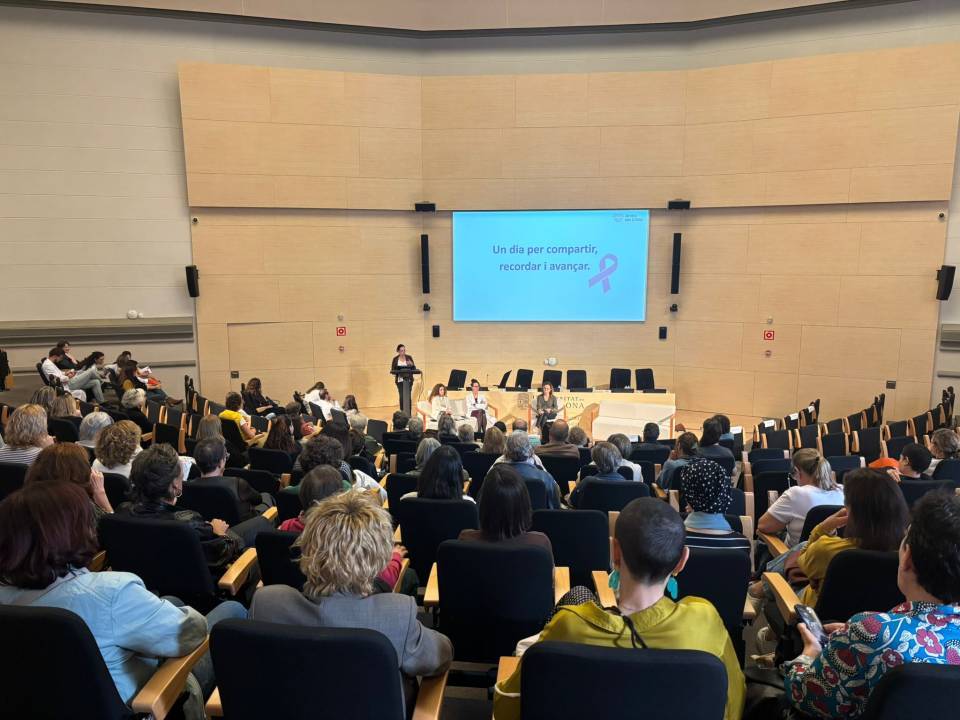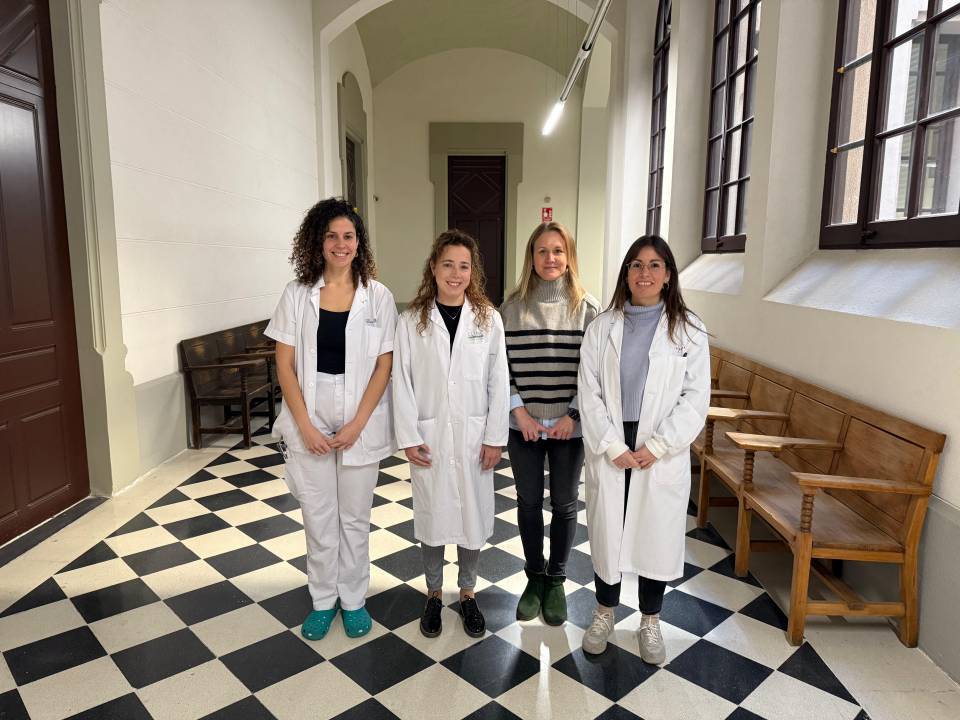Frequently asked questions about Breast Cancer
What’s wrong with me?
The diagnosis of cancer refers to the presence of cells that have transformed and acquired different capacities, such as the abilities to reproduce more quickly and leave the organ where they were created. These two features mean they are aggressive and are therefore defined as malignant cells.
By and large, having to deal with a diagnosis of cancer is a new and unexpected situation and represents a significant change in a person's life. Nevertheless, everybody has a different approach to problems and adverse situations which, together with their own beliefs and values, means that each patient has a unique manner of dealing with the disease.
Patients can be expected to go through different stages; these tend to last from days to weeks. The first stage is “initial shock”, characterised by feelings of vulnerability, loss, confusion, insecurity and weakness. The second stage is denial or disbelief. Thirdly, patients often experience a phase involving sadness, crying, depression, impotence, fear and even anger. The final stage is acceptance and respite; this tends to coincide with the start of treatment.
There are several degrees of anxiety and fear. In general, if you feel incapable of handling your emotions, then the best option is to seek out help from those around you or maybe even a professional. It is important to keep your mind busy with useful and enjoyable activities that distract you since any inactivity may give rise to negative thoughts.
According to the World Health Organisation (WHO), the aspects associated with the onset of breast cancer are alcohol consumption, tobacco, obesity and hereditary factors. Some hormonal variables are also considered risk factors: an early first menstruation, first pregnancy at an advanced age, a low number of births and a reduced breastfeeding period.
The male population can develop breast cancer; however, the incidence is very low and only represents 1% of all diagnosed cases of breast cancer. As is the case for women, family history has a direct influence. Tumours usually appear in men much later than they do in women and the most used treatment is a mastectomy because men tend to have less mammary tissue and there is no possibility of conservative surgery.
Studies that analysed the potential connection between breast cancer and stress did not find any evidence of a cause-and-effect relationship. Notwithstanding, stress is a manifestation of physical or emotional tension and indicates a poor connection with one’s surroundings. And so a state of chronic stress can affect the immune system which may be a predisposing factor to developing cancer. Yet the studies conducted to date do not support this hypothesis.
Cancer is not contagious. In the past, people often stayed away from cancer patients because they were afraid the cancer would be transmitted like the flu or a cold. But this is not the case and so you can be close to or touch someone who has cancer. In fact people with cancer generally need support and friendship.
It is not a rare situation and nowadays thousands of pregnant women are treated for breast cancer. Surgery is one of the main treatments and anaesthesia does not imply any risk for the foetus. The most used surgical procedure is a radical mastectomy; conservative surgery would require a course of radiotherapy and this could affect the foetus. If conservative surgery is the treatment of choice, then radiotherapy should be delayed until after the birth.
Chemotherapy is the second most used treatment. Recent studies have shown that certain chemotherapy agents can be administered during the second and third trimesters without increasing the risk of foetal malformations. Whenever a pregnant woman requires chemotherapy after surgery, it must always be delayed until the second trimester. If the patient is already in the third trimester, then labour is induced a few weeks before the due date to minimise the delay before starting chemotherapy.
Ductal carcinoma in situ, or intraductal carcinoma, is not what we typically call cancer. It is a phase prior to cancer or an early-stage cancer that hasn't had time to spread to other organs because it is still located within the milk ducts. The walls of the ducts form a barrier that prevents the malignant carcinoma cells from invading adjacent healthy tissue. This means that when the entire carcinoma is removed, then practically all patients are cured of the cancer.
When the malignant cells invade and rupture the milk duct wall, then it is called an invasive ductal carcinoma. This could mean, although not always, that the cancer cells have reached the surrounding healthy tissue and are advancing towards the lymphatic vessels and subsequently the lymph nodes.
Receptors can be considered as small antennae on the surface of cells. These antennae receive messages from outside the cell, so both healthy and cancer cells know what is going on around them and how they should react. Hormone receptors are essential for the breast; depending on the amount of feminine hormones in the blood stream the breasts will grow, prepare for lactation or undergo atrophy. Cancer cells that still have their hormone receptors use hormones as growth factors, or in other words as a "food supply". To prevent this from happening, there is a type of treatment that targets positive hormone receptors.
Receptors are proteins found inside or on the surface of certain cells. They can bind with different substances, for example, hormones circulating in the bloodstream. Normal cells and some breast cancer cells have receptors that bind with oestrogen and progesterone.
Cancer cells can contain progesterone or oestrogen receptors. Breast cancers that include cells containing oestrogen receptors are known as oestrogen receptor-positive cancers (ER-positive or ER+), while those with progesterone receptors are called progesterone receptor-positive cancers (PR-positive or PR+).
Malignant tumour cells can produce substances (proteins) that differ from those produced in normal cells. This is because of alterations in the genes or how they are expressed. One of these substances is the protein HER2. When a very high quantity is observed on the tumour cell’s surface it is known as “overexpression”. This biological characteristic of the cancer cell has been associated with more aggressive tumours. Between 25 and 30% of women with breast cancer that has spread to other areas present a mutation in the HER2/neu gene. There are monoclonal antibody treatments that effectively cancel or inhibit the action of this protein.
Breast cancer is one of the cancers with the highest cure rates, around 85%, while in patients with small tumours that have specific biological characteristics and without any lymph node involvement the cure rate is well above 90%.
What tests will I undergo?
A mammogram and ultrasound provide a suspected diagnosis, but a biopsy needs to be taken from the area to confirm the diagnosis. The purpose of a biopsy is to obtain a tissue sample from the suspected area for subsequent analysis. A biopsy is the definitive and most important diagnostic test.
Mammography is the most effective method. Early detection of breast cancer means less aggressive treatments are needed and the chance of being cured increases. Breast self-testing in itself does not suffice as an efficient detection method.
What treatments are available?
No. There is a large body of evidence demonstrating that modern treatments are effective both in terms of alleviating symptoms and increasing survival This does not mean that current treatments are harmless. In fact some of them can cause severe side effects. Having said that, breast cancer is a fatal disease if it is left untreated, and today's cancer treatments have proven to be effective and save lives, particularly when the cancer is detected and treated at an early stage. Even in cases where the breast cancer cannot be cured, early treatment can extend the patient's lifetime and improve both the symptoms and their quality of life.
No. Surgery is one of the primary treatment options for breast cancers that are still in localised stages, i.e., in cases where the tumour has not spread from the breast and axillary lymph nodes. There are currently two main types of surgery: conservative surgery – only the tumour (lumpectomy) or one quadrant of the breast (quadrantectomy) is removed; and radical surgery – the entire breast (mastectomy) is removed.
The type of surgery depends on the size, location and spread of the tumour. In some cases the initial breast cancer treatment involves around six months of systemic treatment based on chemotherapy (called neoadjuvant chemotherapy) or hormonal therapy (called neoadjuvant endocrine therapy). This stage of treatment will be followed by surgery.
Current standard surgical treatment is to remove the malignant tumour and a surrounding layer of healthy tissue to ensure the cancer is fully eliminated. The healthy part of the breast does not need to be removed, nor does it increase the chance of being cured.
Chemotherapy is the administration (often by injecting them into a vein) of a group of drugs which destroy cancer cells that have managed to spread throughout the body. Chemotherapy that is applied as a complement after surgery is called adjuvant chemotherapy, it is used to reduce the likelihood of the breast cancer returning after removing the tumour. Chemotherapy that is used to reduce the size of the tumour prior to surgery is known as neoadjuvant chemotherapy.
Radiotherapy uses ionising radiation to perform local treatment on breast cancer or some of its metastases. The objective is to destroy tumour cells while causing the least possible amount of damage to healthy tissue around the tumour. Radiotherapy is usually used after a conservative surgical intervention to eliminate any remaining tumour cells and to decrease the chance of breast cancer recurrence. Post-operative radiotherapy is indispensable whenever conservative surgery is performed, whereas radiotherapy is only indicated for certain cases after radical surgery (mastectomy).
It is difficult to predict the side effects each patient will experience. On one hand, the type of treatment each individual receives depends on the type of cancer and its stage (extent), their age, general health and personal preferences. Furthermore, each medication or treatment plan has different side effects. And on the other hand, some side effects could be severe, while others only mild. Chemotherapy or endocrine therapies are generally well tolerated and patients often mention after finishing the therapy that they would do it again (if they had to).
In the short term, the most typical side effects resulting from chemotherapy (and which are easily treated) are nausea and vomiting, loss of appetite, hair loss and mouth ulcers. Tiredness is also common but more difficult to treat. In some cases patients may have low blood cell counts (low defences). This can lead to an increased risk of infection, bleeding or bruising resulting from small cuts or minor injuries, and tiredness due to anaemia.
On the positive side, the majority of side effects associated with chemotherapy usually disappear completely after finishing treatment.
Radiation treatment in the breast area does not tend to cause any pain. However, some patients may experience temporary skin irritation and tiredness. This tiredness often persists for several weeks after finishing treatment.
The lymphatic system is akin to a motorway network, where the lymph nodes represent the tollbooths and the lymphatic vessels are the motorways. In some areas there are clusters of lymph nodes, such as the armpit, the neck or the groin, and they can also be found throughout the body between other accumulations in other areas. As such, it is impossible to remove all of the lymph nodes from a given region. Surgeons do sometimes remove a cluster of lymph nodes, these typically contain between 5 and 20 nodes. Either way, the aim is always to remove only what is strictly necessary.
The sentinel node is the first site to which a regional lymphatic system drains, e.g., lymph from the mammary gland drains into the axillary lymph node. If this lymph node is affected by the tumour, then an axillary lymphadenectomy is almost always required, with the exception of certain cases. If the sentinel lymph node has not been affected, then there is no need for a lymph node dissection.
This is the type of operation performed when axillary lymph node involvement has been diagnosed. It is neither radical nor aggressive surgery; surgeons always try to remove the least possible number of nodes. Axillary lymph node dissection means the removal of level I and II axillary nodes, while preserving level III nodes located closest to the chest. Only if the surgeon believes it necessary they will resect level III nodes.
The armpit contains three levels of lymph nodes, from those closest to the chest, up to the ones found near the collarbone. In principle, the objective is to remove just the first two levels of axillary lymph nodes, even in cases where they are affected by the cancer, in order to reduce the risk of lymphoedema, i.e., inflammation in the arm. The likelihood of experiencing lymphoedema is related to the number of lymph nodes removed.
In the majority of patients, the sentinel node technique precludes the appearance of lymphoedema, or swelling in the arm corresponding to the operated breast. The technique is increasingly popular and consists in resecting the first axillary lymph node or nodes. The technique aims to avoid removing healthy lymph nodes and so it is performed in patients whose axillary lymph nodes show no signs (during an ultrasound of the tumour and armpit area) of cancer involvement at the time of diagnosis.
Although the length of stay can vary greatly, you may be discharged after 2–4 days. Patients are often discharged wearing a drain. Long hospital stays are best avoided to reduce the risk of infections.
The medical team will do everything they can to alleviate and eliminate any post-operative pain. This requires collaboration from the patient and their family to tell the healthcare staff whether the pain is controlled, as extra dosages of painkillers can often be scheduled to prevent unnecessary periods of pain or discomfort.
Before surgery, a course of rehabilitation will be programmed so that you may receive instructions about what to do on the day of the operation and the next few days.
Radiotherapy is a very effective treatment against cancer cells because it attacks those cells that are within its field of administration. Recent developments mean that radiotherapy can be applied a few minutes after removing the tumour and before closing the wound. Therefore the surgical team can eliminate the cells that are very close to the tumour removal site. Some patients only require this intra-operative radiotherapy, while others receive complementary radiotherapy at weekends or even a few months after the intervention.
Not all patients have to receive chemotherapy. Thanks to research carried out over the last few years, some very good tools are now available for predicting when a patient should receive treatment. Chemotherapy is therefore only administered to patients who need it, whether because it is an aggressive cancer, it is a large tumour or it has affected the lymph nodes. Other factors are also taken into account, such as the tumour’s sensitivity to chemotherapy. Hormone receptor-negative breast cancers tend to be more sensitive to this treatment.
Hereditary breast cancer represents 5–10% of all cases of breast cancer. It affects patients who, in every cell throughout their body, carry a specific mutation in the BRCA1 or BRCA2 genes. These women also have an increased risk of suffering ovarian cancer and other types of cancer. Men who carry this mutation also present an increased risk of breast cancer. The only way of determining whether or not an individual carries this mutation is through a blood analysis and genetic study.
Physical changes, tiredness, nausea or vaginal dryness are common treatment side effects which, in conjunction with the personal image change and emotional situation, can bring about a reduction in sexual desire. Sexual desire generally returns when you start feeling better. This means that if treatment is every 2 or 3 weeks, then sexual desire will return a few days before the next treatment cycle. Upon completing chemotherapy, sexual desire returns to the same levels as before starting treatment.
Cancer treatments often reduce the vagina's capacity to produce lubricating fluids when aroused. Therefore you may require additional lubrication to ensure sex is comfortable. If you use a vaginal lubricant, try to choose a water-based gel that is free from fragrances and chemicals. These products are available in pharmacies.
Additionally, as women age the vagina may naturally lose its moisture and elasticity. Cancer treatments can accelerate these changes. Vaginal moisturisers are hormone-free products designed to be used several times a day in order to improve general vaginal health and comfort. Vaginal moisturisers differ from lubricants in that they last for longer and are not designed for sexual activity.
During breast cancer treatment and when taking certain medicines, you may notice some changes in the colour and thickness of your fingernails and toenails, or similarly changes around the nail bed. Marks may appear on your nails in the form of horizontal or vertical lines, or small cracks. These are not permanent and disappear with new nail growth.
Your nails may grow back thin or fragile, or they do not grow like before and break more easily. These nails may finally suffer from nail lifting (separation from the nail bed) or detachment. In such cases, if the nail is not attached to the nail bed, then there is a greater likelihood of being infected by bacteria or fungi; this also applies to the cuticles which can become infected when they start to deteriorate.
Patients suffer hair loss because the chemotherapy targets all cells that divide rapidly; this means both healthy and cancerous cells. Hair follicles are one of these fast-growing cells. Therefore, as treatment cycles are administered in order to kill off cancer cells, they are also destroying hair follicles. A few weeks after starting chemotherapy you may experience partial or even total hair loss, otherwise known as alopecia.
Some chemotherapy drugs only affect head hair whereas others also produce hair loss from the eyebrows and eyelashes, as well as pubic, leg, arm and armpit hair. Which areas are affected depends on the type of drug and the duration of use. Not all drugs used to treat breast cancer lead to alopecia.
The schedule and sequence in which these drugs are administered also affects hair loss. Some drugs are only administered weekly and in small doses; this can minimise any hair loss. Other treatments that are scheduled every 3 weeks and at higher doses are more likely to cause a greater degree of hair loss.
Hair does not generally fall out immediately. It often occurs 3 weeks after starting treatment. At this point, hair may be lost slowly or in large tufts. Hair texture and volume may be different after chemotherapy.
Hair is not only lost from the head; it can fall out from any part of the body, such as the eyebrows, eyelashes, arms, legs, armpits and the pubic region. Depending on the drug prescribed for each case: individuals may lose all hair from their head, generally during the first few weeks of treatment, eyelashes and eyebrows (Doxorubicin); some people notice weaker hair growth (methotrexate); minimal hair loss occurs in the majority of women (5-fluorouracil) or total hair loss from the head, eyebrows, eyelashes, pubic area, legs and arms (taxol, a.k.a., paclitaxel).
Hair dyes contain chemicals that can damage your hair. However, studies have found no evidence to suggest that dying your hair causes more damage if you have previously received chemotherapy. Nevertheless, you are advised to wait at least two months after finishing treatment before dying your hair.
There are currently no effective methods known to prevent chemotherapy-related hair loss. In the past, attempts to reduce hair loss included the use of ice bags as it was thought they may reduce blood flow to the hair follicles and therefore limit their exposure to chemotherapy agents. This technique does not fully prevent hair loss, what is more it produces headaches and so the majority of centres have withdrawn its use.
Two different catheters may be used to avoid having to receive repeated injections: a Port-A-Cath® or a peripherally inserted catheter known as a PICC line.
The Port-A-Cath® catheter is a plastic or metal disc introduced beneath the skin. They are inserted in an operation that does not require a hospital stay. Typically, once they are in place for around 7–10 days patients no longer notice them; they do not produce any pain or discomfort.
The end of a peripherally inserted central catheter (PICC) remains outside the body. This means they require some special weekly care but do not need to be inserted using a surgical procedure.
The catheters are used to extract analytical samples and to administer chemotherapy agents, other medications or contrast agents before performing diagnostic imaging tests, e.g., a CT scan.
Although there is no specific “cancer preventing diet”, i.e., a list of foods that have been shown to prevent cancer, we should all eat a variety of healthy foods, with an emphasis on plant-based foods such as pulses, seeds and cereals, fruits, vegetables, milk and dairy products.
Taking part in physical activity may reduce the severity and appearance of side effects associated with the treatment. Research shows that exercise can: alleviate nausea arising from chemotherapy; improve blood flow to the legs and therefore reduce the risk of clots; alleviate constipation by stimulating the digestive system and promoting bowel movement; revitalise sexual desire; relieve fatigue caused by radiation therapy; and reduce insomnia.
Although it is not always necessary, far from it, there is a series of situations that necessitate a mastectomy. These cases correspond to the presence of two or more distantly separated tumours in one breast, or the presence of one very large tumour. These are rare situations, but some other patients are also recommended a mastectomy because the affected breast is very small or the tissue is very dense and the doctors cannot determine whether or not the tumour extends beyond the breast.
This is a distinct possibility and also recommendable; so long as the patient does not have to receive post-operative radiotherapy. Radiotherapy administered on large tumours or in certain situations can damage breast implants or expanders inserted during breast reconstruction, thus reducing the aesthetic qualities of the final result. Radiated implants experience fibrosis” or “are prone to fibrosis, and can harden leading to pain, an unpleasant feeling when touched and a feeling of tightness or discomfort. As this does not always happen, but rather only sometimes, then this option must be discussed with the patient so that they are involved in the decision.
In some countries, for example Spain, fixed or silicone implants are covered by public health insurance and can be ordered directly from the hospital or health centre. Wigs, on the other hand, are not covered.
The treatment is effective if the tumour has decreased in size or disappeared. During treatment the oncologist will order a series of tests that tell us about how the cancer is responding to treatment. The tumour's response to chemotherapy is independent of any side effects experienced by the patient.
Endocrine therapy involves the administration of medicines, usually taken orally, that block the production of oestrogens or their action on malignant breast cells. Under normal conditions, mammary gland cells are stimulated by female sex hormones. Malignant breast cancer cells that have not lost their hormone receptors use these female hormones as a food source and to promote growth. In such cases, hormonal therapy is administered to decrease this food supply to the tumour cells and hopefully kill them.
Hormonal therapies have proven very effective in this context and following breast cancer surgery they can reduce the risk of tumour recurrence by almost 50%.
The treatment is generally administered orally and the duration varies between 5 and 10 years, depending on each tumour's characteristics. Regarding side effects, hormonal therapy can produce hot flushes, irregular periods, slight vaginal bleeding (regular gynaecological check-ups are recommended) or bone mass loss (osteoporosis).
Pre-menopausal women generally preserve or recover ovarian function and their menstrual cycle returns to normal once they have finished treatment. Resumption of ovarian function usually depends on the patient's age before starting treatment and the type of medication. For example, younger women tend to resume their menstrual cycle more easily than peri-menopausal women (those who are close to the menopause).
Living with Breast Cancer
Only 5–10% of breast cancers are hereditary. In other words, in 90–95% of cases there is no increased risk of the patients’ daughters developing cancer. Either way, it is always a good idea to follow a healthy lifestyle and attend regular gynaecological check-ups.
Cases where two family members have been diagnosed with pre-menopausal breast cancer or three members with post-menopausal breast cancer are considered hereditary. Nevertheless, the likelihood of other family members developing breast cancer is still low, around 10–20%. In such cases individuals are advised to undergo a genetic study to rule out the presence of hereditary mutations.
Being diagnosed with cancer implies a very significant change in your personal life and each family member handles it differently. It is generally a good idea to explain to them your feelings, fears, worries and anything else you may need to. It is a way of making them feel useful because they can support you and help you express your emotions. If you have children, it is important that you speak with them and explain what is happening.
Yes. The entire breast cancer diagnosis and treatment process is a stressful life experience that can affect your self-esteem. At the same time, you may also undergo changes in your physical appearance that make you feel less attractive, such as hair loss, skin and nail alterations, weight changes, scars and lymphoedema.
It is certainly possible. Having said that, if you wish to have children after suffering breast cancer, then you should discuss it with your oncologist to assess your individual case. Some breast cancer treatments can lead to infertility. Nowadays, however, fertility preservation techniques are available. Whatever the case may be, the decision should be individualised and consider several factors, e.g., age and tumour type.
Check-ups are generally performed every 3 or 4 months for the first 2 or 3 years, then once or twice per year at 4 or 5 years after the intervention.
Some people think remission means that the breast cancer has been cured, but this is not always the case. Remission is a stage when the cancer responds to treatment or is under control. A state of complete remission means that none of the available testing techniques can detect any cancer cells. Whereas in a state of partial remission, the cancer has been reduced but not eliminated completely. Remission periods can last from several weeks up to many years. Complete remission can go on for years before the individual is eventually considered to have been cured. If breast cancer reappears, further treatment can return patients to a state of complete remission.
Aquatic exercises are recommended because they improve and strengthen the affected arm. Other types of treatment supervised by a physiotherapist are also available, such as lymphatic massage or compression bandages, among other techniques.
There are different procedures available. On the one hand, there are autologous reconstructions that use the patient's own tissue (abdominal tissue, back muscles, gluteus, etc.). And on the other, there are implant reconstructions that use different types of synthetic material to reconstruct the breast. Techniques that use implants are more straightforward than autologous ones and are therefore more popular. Areola and nipple reconstruction techniques are also practised. The areola is reconstructed using skin from other areas of the body or with tattoos. The nipple is reconstructed with skin taken from the reconstructed breast.
Yes, in some cases. For example, when the opposite breast is excessively big, excessively small or very flaccid.
Yes, cancer patients often experience hopelessness and sadness. Uncertainty is often the feeling that most closely defines a cancer patient’s experience. People also often feel guilty because they did not realise sooner. It is very important to remember that the cancer is not your fault, but rather it develops due to a combination of several factors. Do not interpret these reactions and fears as the symptoms of a psychological problem. Remember that it is completely normal to feel such emotions and they will gradually subdue. If you cannot control your emotional situation or these feelings affect your daily life, then you should visit a professional.
In general, most cancer patients worry about their families or jobs. It is also typical to worry about your physical condition and what may occur during treatment. Most patients with young children are afraid of explaining their situation to them. All of these concerns are cancer-related circumstances and are very normal reactions.
After the illness, you may notice changes in your sexuality due to different factors. The treatment can cause vaginal dryness and a loss of elasticity. Similarly, tiredness brought on by the disease or treatment can also reduce sexual desire. Psychological factors experienced during diagnosis and treatment also play a significant role. Many of these changes are temporary and therefore disappear with time, hence the patient returns to normal.
Some local authorities provide a home help service that is managed by Social Services and each centre’s support and palliative care teams. A 24-hour helpline is made available to patients throughout their treatment.
Looking to the future
Currently, prognoses and therapeutic decisions for breast cancer patients are based on a series of clinicopathological parameters. Genomic studies analyse the activity of a group of abnormal and normal genes that can increase the risk of post-treatment cancer recurrence. These tests help when deciding whether to administer adjuvant chemotherapy, i.e., chemotherapy after surgery to remove a tumour and in patients with early-stage cancers. The purpose of a genomic study is, therefore, to apply new genetic knowledge about the cancer and avoid over- or under-treatment.
The oncologist can use genomic test results to determine the risk of recurrence and whether or not chemotherapy needs to be administered.
This type of study is not suitable for all breast cancer patients and is reserved for early-stage cancers that have not spread to the lymph nodes (or which have only spread to a very small number of nodes).
The cost of genomic studies is subsidised by the hospital and involves the analysis of a tumour sample obtained through a biopsy.
Substantiated information by:
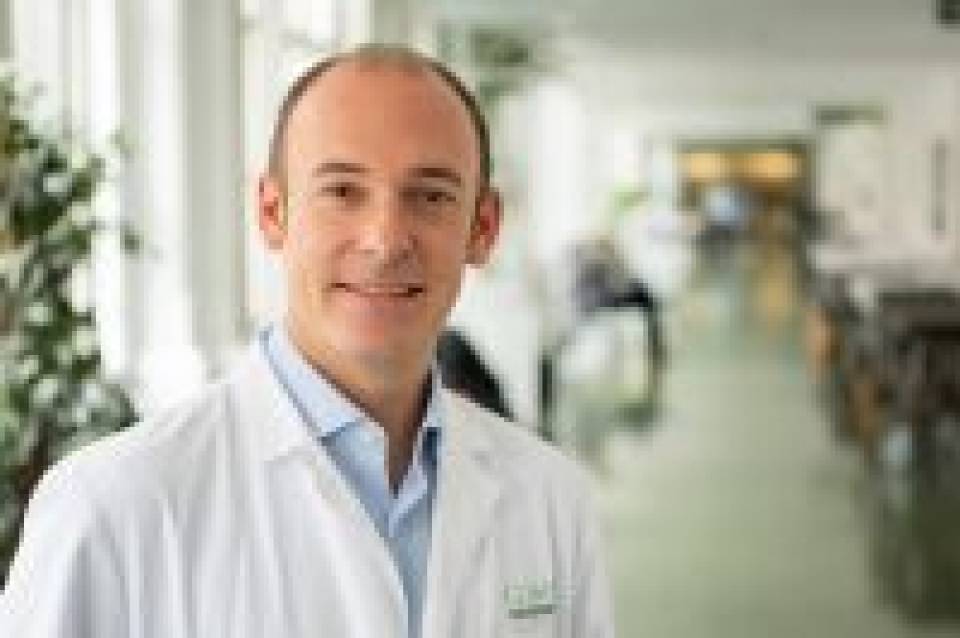

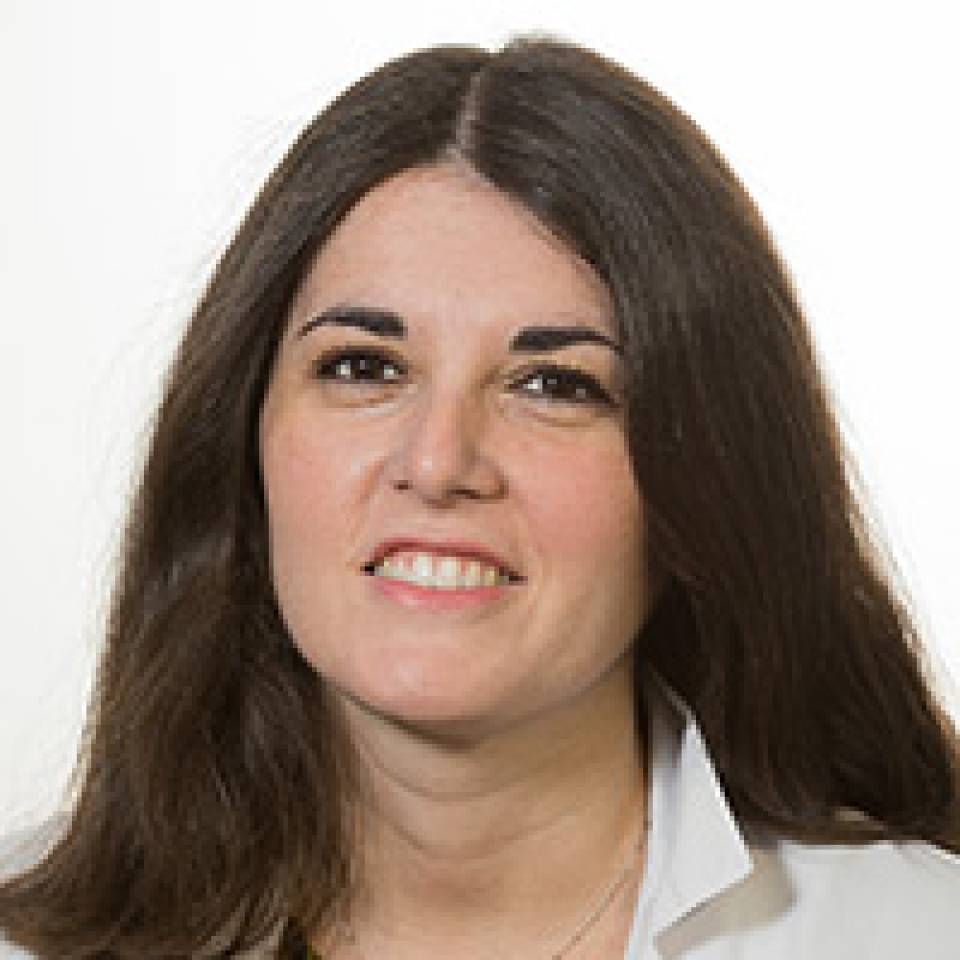
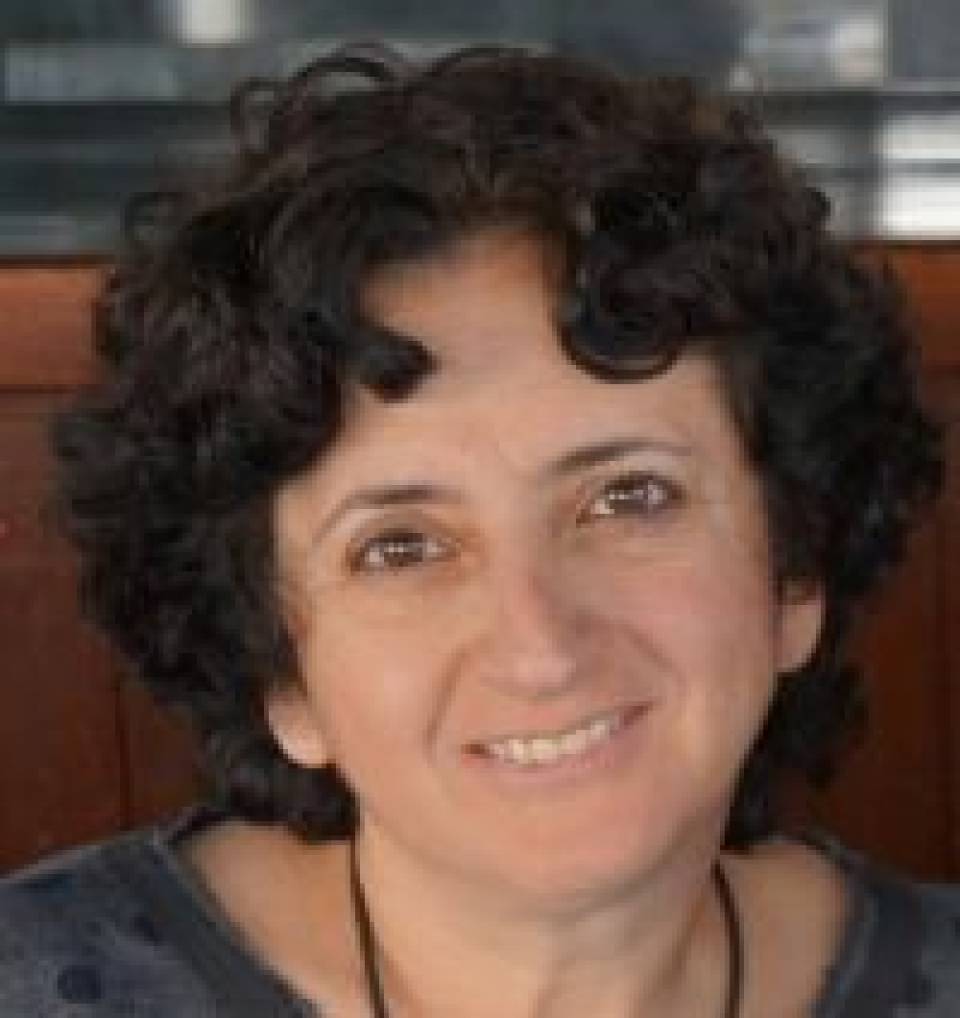
Published: 20 February 2018
Updated: 20 February 2018
Subscribe
Receive the latest updates related to this content.
Thank you for subscribing!
If this is the first time you subscribe you will receive a confirmation email, check your inbox
